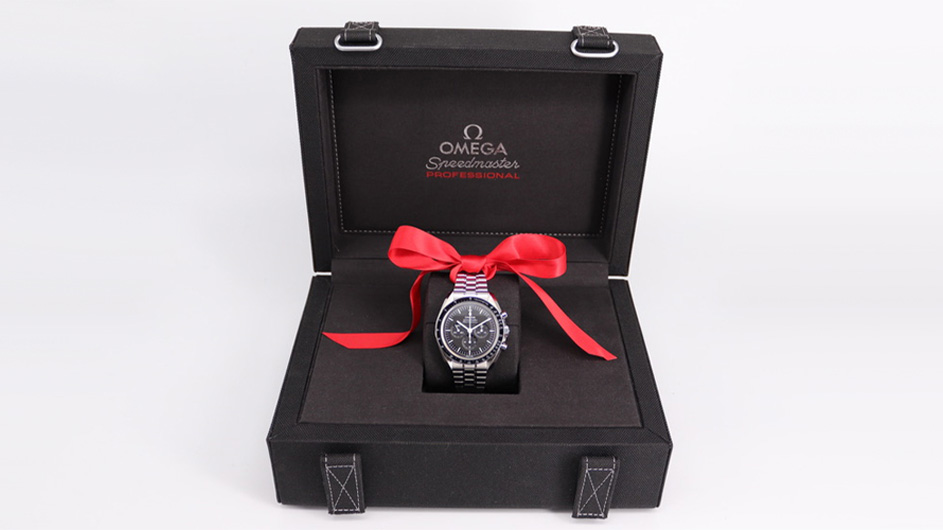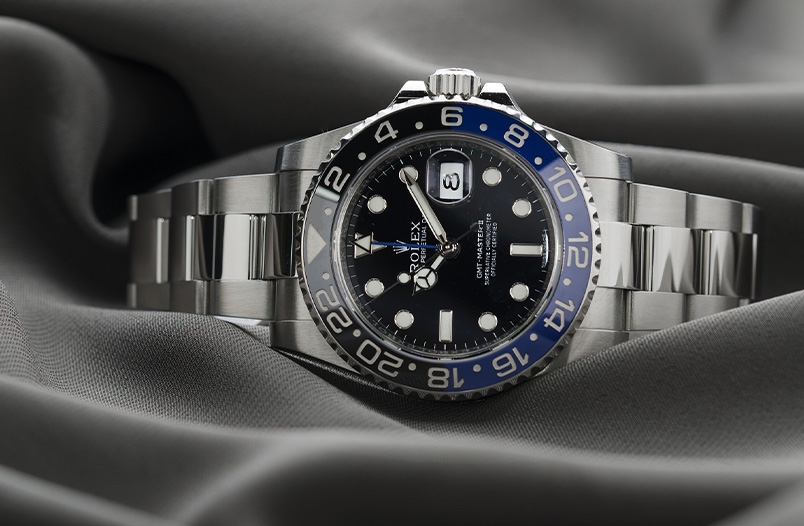An Expert Guide to Investment Watches
When considering investment watches, there are some vital points to consider, and we will be discussing the most important in this article. This is by no means a complete guide – as buying a watch as an investment for yourself or as an investment gift, can be complex. However, we’re going to start with the most important question of Supply and Demand.
I must begin by saying that what follows is only my opinion – I might be right and I might be wrong. However, over the last 20 years I have been right quite a lot.
Supply & Demand – Key Considerations
As with any commodity, the perceived value of a watch is based partly on the price of its component parts, cost of manufacture, R&D, shipping etc. But and perhaps just as important is the perception of what a potential customer is prepared to pay for it.
The cost of component parts and manufacture of a watch is relatively small when compared to its perceived value. There’s only so much you can charge for an hour of labour or an ounce of gold or stainless steel.
On the other hand, what somebody is prepared to pay for something is an entirely different, and virtually limitless, thing.
The Paul Newman Daytona

In 1968, the Paul Newman Daytona had a retail price of $215. Made of steel, with Rolex movement – there’s only so much that Rolex could charge for those component parts. However, when valuing a watch like this in the 21stCentury you must consider that it’s one-of-a-kind.
It’s very probably the most famous wristwatch in the world, and that some watch collectors out there have a LOT of money. When Phillips auctioneers sold this watch in 2017 (49 years later) its ‘real’ value was established at $17.8m – I wouldn’t have been surprised if it made $100 million. Why? Because of the basic economic principle of ‘Supply and Demand’ and the first thing that you should consider when you’re buying a watch for investment.
New ‘v’ Discontinued Investment Watches
To avoid one of the biggest risks in watch investing you should only ever invest in discontinued watches. While it is entirely possible that current watches can increase in value – we’ve seen this significantly over the last seven years with Rolex, it does come with an inherent risk that doesn’t exist with discontinued references.
While supply for current Rolex models is currently low and demand is high, this can change very quickly because neither of these things are fixed..
Rolex case study
Rolex for example have the capacity to manufacture significantly more watches than they currently do, they just don’t want to so right now.
If Rolex, decide tomorrow to manufacture 50,000 more Daytonas a year then the Daytona will suddenly become far more available at retail price. Supply will increase and therefore the pre-owned value will fall. In this case the drop would be 75%…
On the other hand, if your money is invested in a discontinued watch, the supply level is fixed at an all time maximum and the older the watch gets and the better its condition the smaller levels of supply are.
Which Watches Make a Good Investment?
These days, it’s become a ‘thing’ for people to buy a new Rolex and keep it in perfect unworn condition as a financial investment for the future. If you ask me to find you a totally unworn Hulk, Batman, or Root Beer, or maybe an unworn Patek Philippe 5711, I can do so quite easily. The cost will be very high, but I can get you one within a few days.
If on the other hand you asked me to find you an unworn 1968 1675 GMT Master II, it would be virtually impossible and that’s because nobody ever used to keep them like that. They bought them, threw away the papers, boxes and booklets and wore them as Mr Wilsdorf intended. This makes a watch like that extremely rare with very low levels of supply and among collectors, demand for such a watch would be massive. Most importantly, the level of supply will never ever increase as they’ve already made all of the 1675’s, they are going to and there will be no more perfect ones. Ever.
There are of course other things to consider when thinking about how supply affects future value, but this is a major one.
Watches as Investment Gifts

Buying a pre-owned luxury watch as a gift for a special person on a special occasion can make the perfect present. As well as being incredibly sentimental, it can also be the perfect investment gift.
Birth year models make particularly good investment watches. We have many customers who plan ahead for their children’s significant birthdays or important life moments such as graduation or wedding.
Investing in watches has particular tax benefits. In the UK any gifts, including watches, made more than seven years before death are not liable for inheritance tax. Therefore gifting a luxury watch is an excellent way to pass down wealth, with the expectation that the value of the watch will continue to climb post purchase.
Put simply – it’s the gift that keeps on giving!
Demand & Desirability
Having covered the supply side of things, we must now consider demand.
Just because something is rare and in short supply that doesn’t make it a good investment. There must be a demand for it as well.
Look at it this way, if you were going to buy a car but you were going to keep it forever and never worry about having to sell it, you could order it in whatever colour you wanted. If you want a pink Aston Martin, go for it, why not? (I don’t know if Aston would paint you one that colour, but you can certainly get it painted afterwards).
Would that be a good idea if you were going to keep the car for say two years and then try and sell it? Clearly not because you could be one of only two people in England who wants a pink Aston Martin and when the time comes to sell it you’ve got to find the other one. Plus, he or she is going to be in a strong negotiating position!
When it comes to investment watches, you need to find something that is desirable now and is likely to be so for the foreseeable future. If you’re clever you can find something that no-one wants now but that everyone will love in the future, but without a crystal ball that’s kind of tricky. So, my top two tips …
- Always go for a watch with the widest appeal and the most limited supply.
- If it’s purely for investment purposes, buy the very best example you can find. After all you don’t have to worry about damaging it if it’s only going to sit in your safe.
The Perfect Investment Watch
For me the best balance is in finding a watch that you love and wear and which will still increase in value. You may not get the same return financially as with a Safe Queen, but your investment will be repaid simultaneously in other ways. I would rather have a less than perfect watch that I can wear daily, and which will make me 50% in 10 years that I would have one that has to sit in the back of the safe and which will make me 70%.
Of course, if you spread your risk with a box full of great watches, all of which you can wear on a rotation basis and all of which are steadily increasing in value, then that is something of an astute watch lover’s dream.
Become a VIP Member to be the first to hear about ‘special’ watches!



